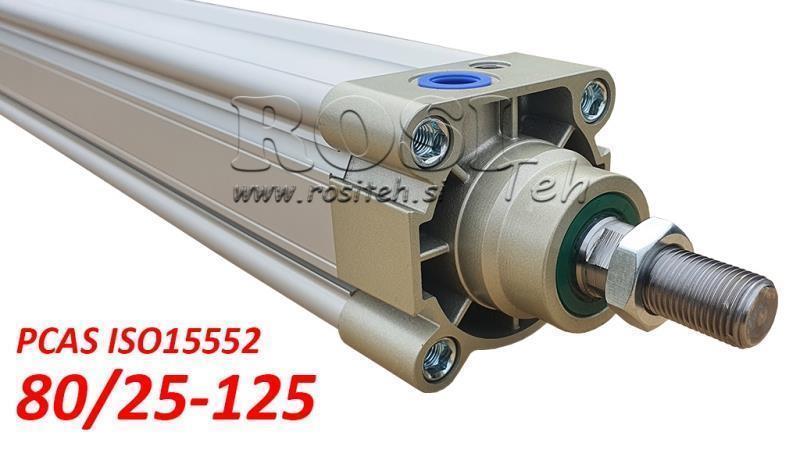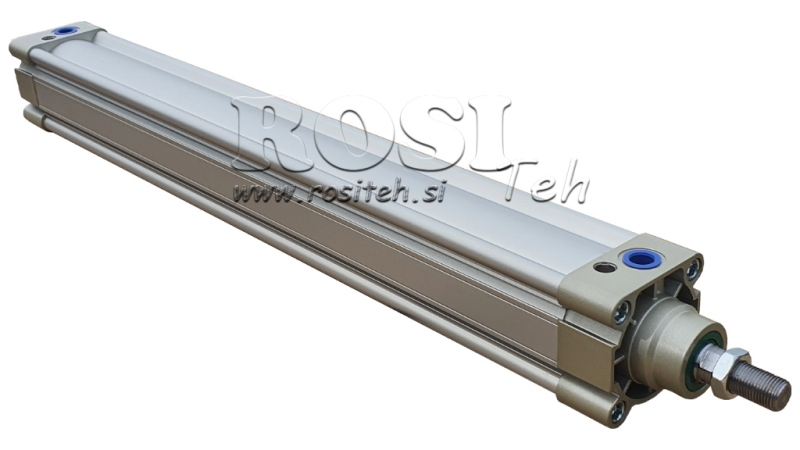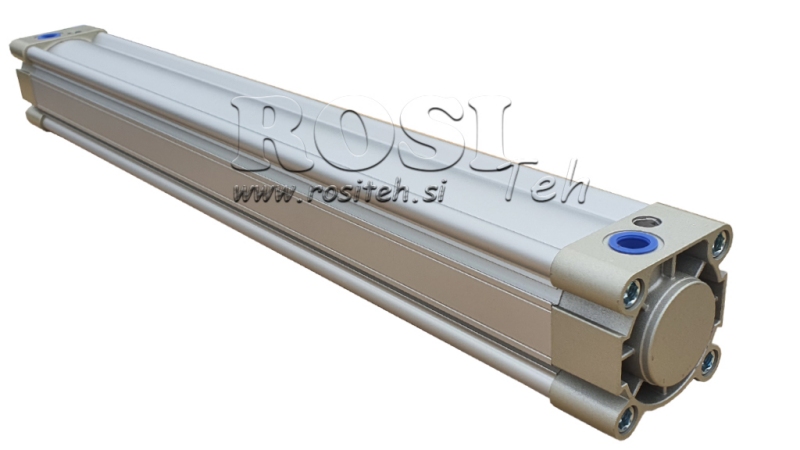- TELESCOPIC - TIPPER CYLINDERS
- STANDARD-BALL
- 2 EXTENSIONS (3.5 TONS)
- 2 EXTENSIONS (6 TONS)
- 2 EXTENSIONS (9 TONS)
- 2 EXTENSIONS (13 TONS)
- 3 EXTENSIONS (5 TONS)
- 3 EXTENSIONS (8 TONS)
- 3 EXTENSIONS (11 TONS)
- 3 EXTENSIONS (16 TONS)
- 4 EXTENSIONS (7 TONS)
- 4 EXTENSIONS (10 TONS)
- 4 EXTENSIONS (14 TONS)
- 4 EXTENSIONS (20 TONS)
- 4 EXTENSIONS (25 TONS)
- 5 EXTENSIONS (5 TONS)
- 5 EXTENSIONS (8 TONS)
- 5 EXTENSIONS (11 TONS)
- 5 EXTENSIONS (16 TONS)
- 5 EXTENSIONS (22 TONS)
- 5 EXTENSIONS (29 TONS)
- 6 EXTENSIONS (6 TONS)
- 6 EXTENSIONS (9 TONS)
- 6 EXTENSIONS (13 TONS)
- 6 EXTENSIONS (20 TONS)
- 6 EXTENSIONS (25 TONS)
- 6 EXTENSIONS (32 TONS)
- 6 EXTENSIONS (40 TONS)
- 6 EXTENSIONS (50 TONS)
- 7 EXTENSIONS (10 TONS)
- 7 EXTENSIONS (11 TONS)
- 7 EXTENSIONS (14 TONS)
- 7 EXTENSIONS (22 TONS)
- 7 EXTENSIONS (30 TONS)
- 7 EXTENSIONS (38 TONS)
- 7 EXTENSIONS (42 TONS)
- 8 EXTENSIONS (11 TONS)
- 8 EXTENSIONS (11 TONS)
- 8 EXTENSIONS (18 TONS)
- 8 EXTENSIONS (25 TONS)
- 8 EXTENSIONS (30 TONS)
- 8 EXTENSIONS (38 TONS)
- 9 EXTENSIONS (20 TONS)
- 9 EXTENSIONS (25 TONS)
- 9 EXTENSIONS (32 TONS)
- 10 EXTENSIONS (20 TONS)
- 10 EXTENSIONS (28 TONS)
- STANDARD-HOLE
- 2 EXTENSIONS (3.5 TONS)
- 2 EXTENSIONS (6 TONS)
- 2 EXTENSIONS (9 TONS)
- 2 EXTENSIONS (13 TONS)
- 3 EXTENSIONS (5 TONS)
- 3 EXTENSIONS (8 TONS)
- 3 EXTENSIONS (11 TONS)
- 3 EXTENSIONS (16 TONS)
- 4 EXTENSIONS (7 TONS)
- 4 EXTENSIONS (10 TONS)
- 4 EXTENSIONS (14 TONS)
- 4 EXTENSIONS (20 TONS)
- 4 EXTENSIONS (25 TONS)
- 5 EXTENSIONS (5 TONS)
- 5 EXTENSIONS (8 TONS)
- 5 EXTENSIONS (11 TONS)
- 5 EXTENSIONS (16 TONS)
- 5 EXTENSIONS (22 TONS)
- 6 EXTENSIONS (6 TONS)
- 6 EXTENSIONS (9 TONS)
- 6 EXTENSIONS (13 TONS)
- 6 EXTENSIONS (20 TONS)
- 7 EXTENSIONS (14 TONS)
- 7 EXTENSIONS (22 TONS)
- 8 EXTENSIONS (11 TONS)
- 8 EXTENSIONS (11 TONS)
- 8 EXTENSIONS (18 TONS)
- INFERIOR-HOLE
- HOLE-HOLE
- BALL-BALL
- COMPACT
- ECO
- TEHNOSTROJ
- UNIMOG
- MEILLER KIPPER
- HYDRAULIC CYLINDER ''LIFT''
- TIPPER
- ADDITIONAL EQUIPMENT
- TIPPER CYLINDERS
- PLANNING
- STANDARD-BALL
- THREE-POINT LINKAGES
- HYDRAULIC CYLINDERS
- STANDARD
- HOLE
- POINT
- FORK
- FLANGE
- CYLINDER FOR TOWING CAR
- BRAKE CYLINDERS
- OTHER CYLINDERS
- EQUIPMENT FOR CYLINDERS
- WELDING CONNECTIONS FOR CYLINDERS
- FLANGES FOR CYLINDERS
- RINGS FOR CYLINDERS
- FORKS FOR CYLINDERS
- END COVER FOR CYLINDERS
- BALLS FOR CYLINDERS
- PISTON FOR CYLINDERS
- TURNED HONED TUBES FOR CYLINDERS
- RODS FOR CYLINDERS
- SEALS FOR HYDRAULIC CYLINDERS
- ROD GUIDE OF THE CYLINDER
- TOOLS FOR SEAL REPLACEMENT
- rods for cylinders
- MEILLER KIPPER -
- TRACTOR STEERING CYLINDERS
- HYDRAULIC PUMPS
- CAST IRON PUMPS
- CAST IRON PUMPS CASAPPA
- PISTON PUMPS
- CAST IRON PUMPS - BANANA
- GEAR PUMPS
- GR ''1'' FLANGES - RIGHT
- GR ''1'' FLANGES - LEFT
- GR ''1'' THREAD - RIGHT
- GR ''1'' THREAD - LEFT
- GR ''2'' FLANGES - RIGHT
- GR ''2'' FLANGES - LEFT
- GR ''2'' THREAD - RIGHT
- GR ''2'' THREAD - LEFT
- GR ''3'' FLANGES - RIGHT
- GR ''3'' FLANGES - LEFT
- GR ''3'' THREAD - RIGHT
- GR ''3'' THREAD - LEFT
- GR ''0'' - RIGHT
- HI-LO PUMPS
- BELLS
- GUMI VMESNIKI
- ELECTROMAGNETIC CLUTCHES
- BEARING ATTACHMENTS FOR PUMPS
- GEARBOXES
- EQUIPMENT FOR GEAR PUMPS
- ASSEMBLY GEAR PUMPS
- TRACTOR PUMPS
- OTHER PUMPS
- NSZ PUMPS
- PUMPS FOR TRANSFER
- HAND PUMPS
- POWER TAKE OFF
- HYDRAULIC MOTORS
- HYDRAULIC MOTORS MM
- HYDRAULIC MOTORS MM SIDE
- HYDRAULIC MOTORS MP
- HYDRAULIC MOTORS MR
- HYDRAULIC MOTORS MP (6 TEETH)
- HYDRAULIC MOTORS MS
- HYDRAULIC MOTORS MT
- HYDRAULIC MOTORS MV
- HYDRAULIC MOTORS B/MR - WITH BRAKE
- PISTON HYDRAULIC MOTORS
- HYDRAULIC MOTORS TMF
- BRAKE FOR HYDRAULIC MOTORS
- HYDRAULIC MOTOR MSU - TRACK DRIVE
- HYDRAULIC MOTORS P.T.O.
- GEARBOXES FOR HYDRAULIC MOTORS
- STEERING VALVES FOR HYDRAULIC MOTORS
- WORM GEAR ROTARY DRIVE
- GEAR GR.2
- GEAR MOTOR GR.3
- HYDRAULIC VALVES
- MONOBLOCK CONTROL VALVES
- SECTIONAL CONTROL VALVES
- REMOTE CONTROLLED VALVES VIA PULLEY
- ELECTROMAGNETIC CONTROL VALVES
- SHUT-OFF VALVES AND PASSAGE VALVES
- LINEAR-CONTROL VALVES
- FLOW CONTROL
- PRESSURE REGULATION
- ELECTROMAGNETIC MODULAR CETOP 3 - NG6 VALVES
- ELECTROMAGNETIC MODULAR CETOP 5 - NG10 VALVES
- ELECTROMAGNETIC YEAT VALVES
- ELECTROMAGNETIC COILS
- REMOTE CONTROLS
- RADIO CONTROLLERS
- PRESSURE SWITCHES
- PROPORTIONAL VALVES
- VALVES FOR TRACTORS - ATTACHMENTS AND BRAKES
- EXPANSION OF TRACTOR TIPPER OUTPUTS
- VALVES FOR LOG SPLITTERS AND FORESTRY TRAILERS
- FLOATING VALVES
- LOAD SENSING VALVES
- HYDRAULIC FILTERS
- HYDRAULIC POWER-PACKS
- MINI HYDRAULIC POWER-PACK 12 V
- MINI HYDRAULIC POWER-PACK 24 V
- MINI HYDRAULIC POWER-PACK 230 V
- MINI HYDRAULIC POWER-PACK 400V
- TRACTOR HYDRAULIC UNITS
- HYDRAULIC GASOLINE ASSEMBLY
- HYDRAULIC DIESEL ASSEMBLIES
- HYDRAULIC PUMP ASSEMBLY 400V
- HYDRAULIC PUMP ASSEMBLY 12/24V
- ELECTRIC MOTOR FOR MINI POWER-PACK
- PARTS FOR MINI HYDRAULIC POWER-PACK
- TANK ''TOP''
- HYDRAULIC POWER-PACK RESERVOIRS
- METAL TANKS
- TANKS FOR MINI POWER-PACKS
- OTHER
- ASSEMBLED POWER-PACKS
- HYDRAULIC HOSES
- OIL HEAT EXCHANGERS
- EQUIPMENT FOR TRAILERS
- CLOSURES
- HYDRAULIC BRAKES
- TOWING HOOKS
- MOUNTING CONNECTIONS
- AIR BRAKES
- PROPORTIONAL HYDRAULIC BRAKES
- SUPPORT LEGS
- CARRIERS AND HINGES
- SUPPORTS AND HINGES
- SET NOSILCEV ZA KIPER KESON FI60
- SET NOSILCEV ZA TIPPER KESON FI78
- SET NOSILCEV ZA KIPER KESON FI85
- SET NOSILCEV ZA TELESCOPIC - TIPPER CYLINDERS VILIČASTI
- TIPPER BALL 8 TONS FOR CONTAINER DIAMETER 60
- TIPPER BALL 14 TONS FOR BOX FI 80
- AVEC HOLDER
- SIDE ANGLE
- ROMA SIDE HINGE
- SIDE HINGE FOR TRAILER - REMOVABLE
- SIDE PANEL KIT FOR TRAILER - COMPLETE
- WELDING HOOKS
- LIGHTS AND PLUGS
- TOP LINKS
- TRAILER SIDES
- AXLES AND PNEUMATICS
- OTHER
- COUPLING BLOCKS FOR TRAILERS
- BOXES
- HYDRAULICS FOR SPLITTERS
- GRAPPLES AND ROTATORS AND DRILLS
- P.T.O. AND ATTACHMENTS
- P.T.O. ECO
- P.T.O. PROFI LINE
- P.T.O. ADAPTERS
- P.T.O. ADAPTERS-BUSHING
- P.T.O. ADAPTERS WITH FLANGE
- P.T.O. ADAPTERS WITH PIN
- P.T.O. ATTACHMENTS-HOLE
- P.T.O. ATTACHMENTS - DOUBLE-SIDED
- P.T.O. ATTACHMENTS - STANDARD
- P.T.O. ATTACHMENTS - FLANGE WITH PIN
- P.T.O. ATTACHMENTS FOR CULTIVATORS
- DOUBLE UNIVERSAL JOINT
- PROTECTION FOR P.T.O.
- P.T.O. ADAPTERS
- P.T.O. CLUTCH
- MACHINES FOR HOSES
- HYDRAULIC STEERING - STEERING SYSTEMS
- QUICK COUPLINGS
- QUICK COUPLING TRACTOR ''AGRI''
- QUICK COUPLING TRACTOR ''THREADED''
- QUICK COUPLING TRACTOR ''EXCAVATOR''
- BRAKE COUPLINGS
- FAST COUPLING HOLDER
- LARGER PACKAGING
- MULTI FASTER COUPLINGS
- MARKING HANDLE FOR QUICK COUPLING
- RUBBER COVER - MALE QUICK COUPLINGS
- RUBBER COVER - FEMALE QUICK COUPLINGS
- PVC COVER - FEMALE QUICK COUPLINGS
- QUICK COUPLINGS - OTHER
- MANOMETERS
- FITTINGS
- COMPRESSION FITTINGS
- BSP CONNECTORS - FEMALE
- BSP CONNECTION - MALE
- BSP CONNECTIONS - FEMALE ELBOW 45°
- BSP CONNECTIONS - FEMALE ELBOW 90°
- CONNECTORS DKOL - FEMALE
- CONNECTORS CEL - MALE
- CONNECTORS DKOL - FEMALE ELBOW 45°
- CONNECTORS DKOL - FEMALE ELBOW 90°
- DKOS FEMALE CONNECTIONS
- CONNECTORS MALE
- FEMALE ELBOW CONNECTORS DKOS 45°
- FEMALE ELBOW CONNECTORS DKOS 90°
- DKJ JIC74° FEMALE CONNECTION
- HYDRAULIC CONNECTION AGJ JIC74°
- HYDRAULIC CONNECTION DKJ JIC74° FEMALE ELBOW 45°
- HYDRAULIC CONNECTION JIC74° FEMALE ELBOW 90°
- HYDRAULIC CONNECTION DKORFS FEMALE
- HYDRAULIC CONNECTION DKORFS FEMALE ELBOW 45°
- HYDRAULIC CONNECTION DKORFS FEMALE ELBOW 90°
- HYDRAULIC CONNECTION AGORFS MALE
- KOMATSU ATTACHMENTS
- HYDRAULIC EYE CONNECTION
- HYDRAULIC DOUBLE ACTING CYLINDERS
- HYDRAULIC DOUBLE ACTING CYLINDERS WITH ROTATING NUTS
- HYDRAULIC DOUBLE ACTING CYLINDERS (BSP) EXTENDED
- HYDRAULIC DOUBLE SWIVEL NUT
- HYDRAULIC DOUBLE ACTING CYLINDERS AGJ JIC74°
- HYDRAULIC DOUBLE-ACTING EXTENDED AGJ JIC74°
- HYDRAULIC BENDERS KNEE 90° AGJ JIC74°
- DAMPER DOUBLE ACTING BSP
- GEARBOXES BSP
- GEARBOXES JIC 74 °
- DOUBLE PULLERS BSP
- DOUBLE ACTING CYLINDERS DL-DS
- HYDRAULIC DUAL FUNCTIONS AL-AS
- HYDRAULIC DUAL ACTUATORS WITH NUT AL-AS
- HYDRAULIC ADAPTERS
- ELBOWS AND T-PIECES
- 90°BSP ELBOW SHORT MALE-MALE
- T- KOM BSP MALE-MALE
- T-KOM WITH SWIVEL NUT
- 90° MALE-FEMALE ELBOW THREAD
- T-KOM FEMALE-FEMALE THREAD
- T-KOM WITH SWIVEL NUT ON THE SIDE
- 90° SHORT ELBOW FEMALE-FEMALE
- 90° BSP ELBOW SWIVEL NUT-MALE
- 90° ELBOW CONICAL-STRAIGHT SEALING
- 90°BSP MALE-FEMALE ELBOW
- ELBOW 45° BSP MALE-FEMALE
- 90° ELBOW FEMALE-FEMALE
- ELBOW 45° BSP FEMALE-FEMALE
- ADJUSTABLE 90° ELBOW MALE-MALE
- 45° ADJUSTABLE ELBOW MALE-MALE
- METAL HOSES - CONNECTIONS
- HYDRAULIC CONNECTION HOSE STRAIGHT TRANSITION
- HYDRAULIC CONNECTION HOSE TRANSITION ELBOW 45°
- HYDRAULIC CONNECTION HOSE TRANSITION ELBOW 90°
- HYDRAULIC HOSES - METAL
- NUTS FOR METAL HOSES
- RING FOR METAL HOSES
- DOUBLE ACTING CYLINDER WITH RING AND NUT
- DOUBLE WRENCH WITH RING AND NUT 60°
- INTERMEDIATE DOUBLE ACTING CYLINDER WITH NUTS
- BEND 90° WITH NUT
- BEND 90° WITH DOUBLE NUT
- HYDRAULIC CROSS INTERFACE
- HYDRAULIC T-COUPLING WITH NUT
- HYDRAULIC PLUGS
- HYDRAULIC HOLLOW BOLTS
- METAL HOSE BANJO
- CONNECTORS FITTING NZ
- HYDRAULIC HOLLOW BOLTS
- HYDRAULIC PLUGS
- BSP FEMALE CONNECTIONS
- BSP MALE CONNECTIONS
- BSP FEMALE CONNECTORS 45° ELBOW
- BSP FEMALE CONNECTORS ELBOW 90°
- FEMALE DKOL CONNECTIONS
- CONNECTORS FULL MALE
- CONNECTORS DKOL FEMALE ELBOW 45°
- FEMALE ELBOW CONNECTORS 90°
- FEMALE DKOS CONNECTIONS
- CONNECTORS MALE
- FEMALE ELBOW CONNECTORS DKOS 45°
- FEMALE ELBOW CONNECTORS DKOS 90°
- JIC74° FEMALE CONNECTION
- HYDRAULIC CONNECTION AGJ JIC74°
- HYDRAULIC CONNECTION DKJ JIC74° FEMALE ELBOW 45
- HYDRAULIC CONNECTION JIC74° FEMALE ELBOW 90°
- HYDRAULIC CONNECTION DKORFS FEMALE
- HYDRAULIC CONNECTION DKORFS FEMALE ELBOW 45°
- HYDRAULIC CONNECTION DKORFS FEMALE ELBOW 90°
- HYDRAULIC CONNECTION AGORFS MALE
- CONNECTORS FITTINGS NZ
- CONNECTORS FITTING NZ
- CONNECTORS FITTING NZ
- HYDRAULIC CONNECTION HOSE STRAIGHT TRANSITION
- CONNECTORS FITTING NZ
- HYDRAULIC CONNECTION HOSE TRANSITION ELBOW 45°
- HYDRAULIC CONNECTION HOSE TRANSITION ELBOW 90°
- EYE CONNECTIONS
- WASHERS
- ADAPTERS MALE-FEMALE 1/4-3/8
- ADAPTERS MALE-FEMALE 1/4-1/8
- EXTENDED ADAPTERS MALE-FEMALE 3/8
- FEMALE-FEMALE ADAPTERS 3/8
- MALE-MALE ADAPTERS 3/8
- CONNECTORS FITTING NZ
- HYDRAULIC HOLLOW DOUBLE SCREWS
- HYDRAULIC DOUBLE ACTING ROTATING NUT
- CONNECTORS FITTING NZ
- HYDRAULIC DOUBLE ACTING (BSP) EXTENDED
- HYDRAULIC DOUBLE SWIVEL NUT
- CONNECTORS FITTING NZ
- CONNECTORS FITTING NZ
- CONNECTORS FITTING NZ
- CONNECTORS FITTING NZ
- GEARBOXES BSP
- GEARBOXES JIC 74 °
- DOUBLE PULLERS BSP
- 90°BSP ELBOW SHORT MALE-MALE
- T- KOM BSP MALE-MALE
- CONNECTORS FITTING NZ
- CONNECTORS FITTING NZ
- T-KOM FEMALE-FEMALE
- CONNECTORS FITTING NZ
- 90° SHORT ELBOW FEMALE-FEMALE
- 90°BSP ELBOW SWIVEL NUT-MALE
- CONNECTORS FITTING NZ
- 90°BSP MALE-FEMALE ELBOW
- ELBOW 45° BSP MALE-FEMALE
- EYE CONNECTIONS
- 90° ELBOW FEMALE-FEMALE
- EYE CONNECTIONS
- CONNECTORS FITTING NZ
- CONNECTORS FITTING NZ
- CONNECTORS FITTING NZ
- CONNECTORS FITTING NZ
- HYDRAULIC SWIVEL CONNECTIONS
- HYDRAULIC HOSES - METAL
- CONNECTORS FITTING NZ
- CONNECTORS FITTING NZ
- CONNECTORS FULL - MALE
- CONNECTORS FITTING NZ
- CONNECTORS FITTING NZ
- CONNECTORS FITTING NZ
- HYDRAULIC ELBOW - WITH NUT
- CONNECTORS FITTING NZ
- CONNECTORS FITTING NZ
- HYDRAULIC T COM WITH NUT
- METAL PIPE-BANJO WITH NUT
- CONNECTORS FITTING NZ
- OTHER-UNCLASSIFIED
- O-RING RUBBER
- CONNECTORS FITTING NZ
- CONNECTORS FITTING NZ
- CONNECTORS FITTINGS
- CONNECTORS FITTING NZ
- HYDRAULIC VENT PTO
- WASHERS
- THREAD STEP MEASURING TOOL
- COMPRESSION FITTINGS
- OTHER ITEMS
- PROTECTIVE EQUIPMENT
- AUTOMOTIVE LIFTS
- BEARING PRESS
- CHAIN HOISTS
- SPRAYERS
- HAND CARE
- JUVI LINE
- FITTINGS BOLTS
- TOY TRACTOR
- SETI
- PVC RESERVOIR FOR BRAKE OIL
- TRACTOR COMPRESSOR PTO
- SWIVEL HOOK WITH EYE
- HOOK WITH EYE
- FUEL TANKS
- FORESTRY CHAINS
- DAMPER
- GARDEN TROLLEY - TIPPER
- SAND FOR REMOVING OIL STAINS
- ROSI TEH METER - 3M
- MOTOR DRILL FOR SOIL
- HAND WIRE BRUSH
- GASOLINE BLOWER
- AXES, HAMMERS AND GARDEN TOOLS
- FUEL DISPENSING GUN
- WHEELS FOR HAND TRUCKS
- ELECTRIC POWER-PACKS
- ELECTRIC MOTORS
- 1-PHASE (230V) B3- FEET
- 1-PHASE (230V) B14 - FLANGE - FEET
- 1-PHASE (230V) B35- FLANGE - LEGS
- 1-PHASE (230V) - FOR CIRCULAR
- 3-PHASE (400V) B3 - FEET
- 3-PHASE (400V) B14 - FLANGE - FEET
- 3-PHASE (400V) B35 - FLANGE - FEET
- 3-PHASE (400V) - FOR CIRCULAR SAW
- ELECTRIC MOTORS WITH BRAKE
- GEARBOXES PMRV
- GEARBOXES ERC
- GEARBOXES UDL (VARIABLE)
- FREQUENCY CONVERTERS - WITHOUT VECTOR CONTROL
- FREQUENCY CONVERTERS - VECTOR CONTROL
- PARTS FOR ELECTRIC MOTOR
- ELECTRIC MOTOR PULLEY
- WEDGE BELTS
- ELECTRIC MOTOR CONNECTION
- PNEUMATICS
- PNEUMATIC CYLINDERS PCAS ISO 15552
- PNEUMATIC CYLINDERS PCAI ISO 6432 MINI
- PNEUMATIC TUBES
- PNEUMATIC CONNECTIONS
- PNEUMATIC ATTACHMENTS SMREKICA ABC
- PNEUMATIC CLASSIC REDUCING CONNECTIONS ABD
- PNEUMATIC CLASSIC ANGLE CONNECTIONS ABLF
- PNEUMATIC CLASSIC ANGLE CONNECTIONS ABLFM
- PNEUMATIC CLASSIC COUPLINGS ABN
- PNEUMATIC CLASSIC COUPLINGS ABI
- PNEUMATIC CLASSIC T CONNECTIONS ABTF
- PNEUMATIC CLASSIC Y CONNECTIONS ABYFFF
- PNEUMATIC PLUG T CONNECTIONS TPA WITHOUT THREAD
- PNEUMATIC PLUG ANGLE CONNECTIONS TPA WITHOUT THREAD
- PNEUMATIC PLUG ANGLE CONNECTIONS TPA WITH THREAD
- PNEUMATIC PLUG Y CONNECTIONS TPA WITHOUT THREAD
- PNEUMATIC PLUG STRAIGHT CONNECTIONS TPA WITHOUT THREAD
- PNEUMATIC PLUG STRAIGHT CONNECTIONS TPA WITH THREAD
- PNEUMATIC PLUG PARTITION CONNECTIONS WITHOUT THREAD
- PNEUMATIC PLUG REDUCING CONNECTIONS WITHOUT THREAD
- PNEUMATIC PLUG VALVE TPA WITHOUT THREAD
- PNEUMATIC STOP PLUG ABZ
- PNEUMATIC MUFFS MADE OF BRASS
- PNEUMATIC PLUG VALVES TPA
- PNEUMATIC QUICK COUPLINGS
- PNEUMATIC QUICK COUPLINGS WITH THREAD 1/4
- PNEUMATIC QUICK COUPLINGS WITH THREAD 3/8
- PNEUMATIC QUICK COUPLINGS WITH THREAD 1/2
- PNEUMATIC QUICK COUPLINGS WITH SPRING 6/4
- PNEUMATIC QUICK COUPLINGS WITH SPRING 8/5
- PNEUMATIC QUICK COUPLINGS WITH SPRING 10/6.5
- PNEUMATIC QUICK COUPLINGS WITH SPRING 12/8
- PNEUMATIC QUICK COUPLINGS WITH SPRUCE 6 MM
- PNEUMATIC QUICK COUPLINGS WITH SPRUCE 8 MM
- PNEUMATIC QUICK COUPLINGS WITH SPRUCE 10 MM
- PNEUMATIC QUICK COUPLINGS WITH SPRUCE 12 MM
- PNEUMATIC QUICK COUPLINGS DISTRIBUTOR Y
- PNEUMATIC VALVES
- PREPARATION UNITS FOR AIR F+R+L
- HOSE REELS
- BLOWING GUNS
PNEUMATIC CYLINDER PCAS 80/25-125 BE ISO15552
PNEUMATIC CYLINDERS
Pneumatic cylinders use compressed air to create linear motion. They play a key role in various applications, primarily in industry, as they provide a clean, efficient, and reliable method for converting energy into mechanical force. Pneumatic cylinders can provide fast and precise movements of various segments.
They are roughly composed of a tube and a piston. The tube of the pneumatic cylinder is made of metal and provides a closed space for compressed air. The piston in the pneumatic cylinder divides the internal space into two chambers. It is connected to the piston rod, and its movement creates mechanical work.
Pneumatic cylinders operate on the principle of using compressed air to create force and linear motion. When compressed air is supplied to one side of the piston, it pushes the piston rod in the opposite direction, creating linear motion. Pneumatic cylinders are usually controlled via electromagnetic valves that regulate the flow of compressed air into and out of the cylinder.
PCAS BE ISO 15552 pneumatic cylinders are double-acting with bi-directional pneumatic cushioning. This means they operate in both directions, or “forward” and “backward.” They have a magnet and a profile tube with a groove. They are most commonly used in industry for tasks such as lifting, clamping, pushing, pulling, and positioning.



















